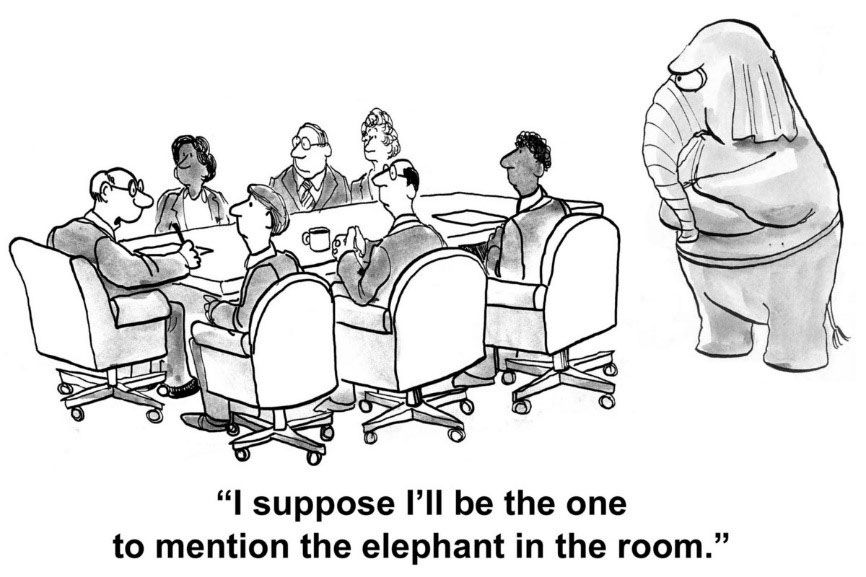Group Development:
A Taste of Tuckman
Experiential Education

Time to Reflect
What makes up an effective group?
While viewing the following YouTube clip, on Leadership - Execution and Teamwork, think about the groups you have worked in and what made them effective. How did you and your group go about completing the set task successfully?
What is the difference between a group and a team?
Groups can grow and evolve over time and as a result the overall nature of any group may change dramatically throughout its duration. A group may be thought of as two or more people who come together and cooperatively work with each other to achieve a common goal in a specified period of time. Groups may also include people who have similar roles or tasks for example shop assistants, farm workers, trades people, engineers, extension workers, and leading hands. Similarly, a team is a group of people who share a common team purpose and a number of challenging goals. Members of the team are generally mutually committed to the goals and to each other. Although there are subtle differences between groups and teams, the teams’ strength or focus depends on the commonality of their purpose and how the individuals are connected to one another. Groups can often become a team therefore, you may refer to any group of people as a team.
Why do some groups work well and accomplish their goals and other groups do not?
There are several good reasons why it is good to work in groups. Research maintains:
- People who work in groups learn effectively from each other
- ‘Many hands make light work’ - groups are more effective than individuals when working on complex projects
- It assists with building on your interpersonal skills and coping with conflict
- It develops your interdependence, accountability, and your sense of self-esteem
Working in groups may therefore increase efficiencies, enhance your learning experience, aid your personal development and benefit you in terms of establishing relationships with others. The difference between what makes an effective team and what does not may stem from the inner dynamics of the group itself. Features of an effective team include but are not limited to:
- Clear Goals
- Defined Roles
- Open Communication
- Mutual Trust and Respect
- Balanced Participation
- Democratic Processes
- Valued Diversity

Tuckman's Model of Group Development
There are a wide range of theories relating to group development, but most assume that groups go through a number of stages which may be referred to as a life-cycle. One of the most influential models of group development has been that of Bruce Tuckman and since then a number of academics and practitioners working with groups have adopted versions of his model.
In 1965 Dr Bruce Tuckman (a social psychologist in the United States Navy) published his research on team development and over the past 40 years it has said to be the most quoted study of this subject.
- His research found that groups typically pass through a series of stages as they grow and evolve into teams
- The process is that fluid- teams may revisit a stage or skip one or more altogether
- Each phase has distinguishing characteristics and presents particular challenges to team members and their managers
The basis of his model, is that at any given point in time, many groups will pass through at least some of Tuckman’s stages of development. However, it is important to note that this is not a linear model, meaning that groups do not necessarily go through every stage in order. Tuckman’s model is organic in nature as groups grow and evolve at their own pace. This is because there are a number of factors and variables that may impede on the way in which a group develops. For example, how long the group will be together, how the group is structured, the aims and objectives of the group, the style of leadership and the behaviour of others within the group.

Forming
The establishment and formation of a group
At this initial stage, individuals in the group are brought together. It is sometimes likened to being the honeymoon phase because the group members feel positive and are generally happy to be working with other people who share the same goals and interests.
For some less outgoing members, this can be a very intimidating experience. There may be uncertainty and insecurity, as group members get to know each other and work out how they may work together.
In the Forming Stage:
- Members are getting to know one another.
- This can be a difficult time for people, as they begin to explore how to behave within the group.
- There is a great deal of individual exploration, with members of the group getting to know each other and discovering common interests.
- This initial stage in group forming is a perfect time to practise interpersonal skills such as building rapport and questioning.
- Developing group cohesiveness is very important at this stage. Cohesiveness evolves as bonds within the group emerge and members begin to feel they belong.
- At this stage, there may be fears of 'not belonging' or not 'fitting in'. In order to facilitate group cohesiveness and bonding, the group leader may try to prevent the group from forming sub-groups. Sub-groups may, however, already be formed if some of the members of the group are acquainted.
- From this initial stage, the group style is established. Style refers to whether the group has a positive or optimistic outlook, whether it is supportive or antagonistic, whether it is serious or light-hearted.
- Once the style of the group is established, the group can be resistant to change at a later stage, therefore it is important that the leader steers the group towards a style that is best suited to meet the aims of the group.
Note - During this stage you and your group members need to:
- Set clear goals and objectives
- Define group roles and expectations
- Allocate individual task roles and allocate them to group members
- Set group rules
This stage is complete when group members begin to feel and think of themselves as part of the group.
Storming
Group Conflict and Fragmentation
This stage is characterised by individuals within the group exerting themselves and being assertive and can develop as a result of disagreements when decisions need to be made. Conflict and disagreement surface as group members get to know one another and work out how they might work together.
In the Storming Stage
- Conflict sometimes arises once the group begins decision making.
- Some conflict may emerge about goals and roles.
- Each member’s role is to encourage group communication and help group members focus on task not on personal differences.
- Conflict managed well usually results in solid decision making and sets a foundation for effective group processes.
- As tensions and conflicts between individuals arise, the group may lose focus of its original aims, this in turn may lead to cynicism, lack of enthusiasm and frustration - some members may withdraw or even leave the group.
- The role of the leader at this time is to encourage group members and refocus the group on its aims and the purpose of its existence. The group needs to make some sort of progress during this stage, to move forward and attain some feeling of success. This will increase group morale and reinforce the desire to belong, cohesiveness.
- A group that fails to manage conflicts may fail to achieve its deliverables.
- As tensions and conflicts between individuals arise, the group may lose focus of its original aims, this in turn may lead to cynicism, lack of enthusiasm and frustration - some members may withdraw or even leave the group.
Note - During this stage you and your group members may exhibit:
- Infighting
- Low group moral
- Increased tension
- Doubts of success
Some groups may not necessarily overcome this stage or if the conflict has not been fully resolved may return back to this stage at some time during the project. Furthermore, an outside body or mediator may need to become involved if the issue escalates. A number of groups do not develop beyond this stage as they lack the communication and conflict resolution skills to work through the issue and mutually agree to an acceptable resolution. However, conflicts managed well at this stage may serve its purpose, as the group will continue to grow and evolve throughout the duration of the task.
Norming
The Development of Group Norms
Surprisingly, after a period of conflict, groups tend to develop a greater cohesiveness, mutual trust and a sense of belonging between members. This is when the group tends to unite, collaborate and cooperate with each other as a result of the resolutions made during the storming phase. Consensuses emerges as the group finds effective ways both to get on with each other and to work together efficiently.
In the Norming Stage
- The group establishes agreement on the way to proceed.
- Communication at this point is more positive.
- Members feel more secure with their place and role.
- Group established agreement on the way to proceed.
- Members feel part of a group and sense of relief that everything will work out.
- Members attempt to achieve harmony by avoiding unnecessary conflict, acting more friendly towards and trusting each other.
- Sense of group unity.
- This is a period of negotiation - working out the group norms - and can be a positive and stable time, when members of the group begin to take on responsibility for the emotional and social wellbeing of the group as a whole. This activity is called group maintenance. From here on, the group can begin to centre its attention on the aims or tasks of the group
Note - During this stage you and your group members may:
- Try to avoid conflict by working harmoniously with each other
- Develop a higher level of trust and respect for each other as friendships form
- Establish and maintain group boundaries developing high group moral
- Express viewpoints openly and respectfully which ultimately leads to higher work productivity
At this point in group development there are a number of advantages with working collaboratively. This is because the climate of cooperation and respect that has developed allows the group members to concentrate their energy on their goals and meeting set targets.
Performing
The Working Stage
This stage is when the group will be most concerned with carrying out its aims and serving its purpose. Members tend to productively engage in tasks as they work towards achieving goals. It is generally thought that during this stage the benefits of working in groups become clear. The group becomes effective with a clear, shared view of the task and a settled way of working.
In the Performing Stage
- Team members are highly motivated to accomplish task and focus on objectives.
- Members may develop insight into one another's strengths and weaknesses and engage in constructive self-change for the benefit of the group.
- Group begins to achieve goals as progress is swift.
- Benefits of working as a group become clear.
- There is no guarantee that the group will reach this stage.
- At times the group may find itself back in the storming stage normally due to problems that were not fully resolved in the storming and norming stages.
- By now members will be working well together, with individual strengths and skills being recognised and utilised to their best advantage for the group's wider aims.
- By this stage, the group should have reached a high degree of cohesion and trust, without which motivation is likely to be lower. Having developed a clear group identity and by each member recognising their roles, the group may become quite independent from the leader.
Note - During this stage you and your group members may:
- Identify closely with each other
- Tend to accomplish a number of tasks making solid progress towards meeting the end goal
- Understand members’ strengths and weaknesses and willing to sort through group issues resulting in the further development of high conflict resolution skills
The group tends to band together devoting time and energy to maintain the good group relations that have been formulated at this stage of group development. If any problem arises generally it is a by-product of unresolved issues that may have occurred in the storming and norming stage.
Adjourning
The Disbanding Stage (some call it mourning)
Some groups have a limited life span. These include groups which come together during a training course or pressure groups which are drawn together to achieve a specific aim. The group prepares to split up. There can be a feelings of satisfaction but also sadness.
In the Adjourning Stage
- Generally occurs after successful completion of task
- Groups may disband permanently or new members may come aboard as new objectives are outlined
- Members are likely to feel disappointed if the experience was positive
OR
- Gratitude if the experience was negative
- The task is to tie up loose ends and complete any additional follow up work
- If group is not to be disbanded – they may just debrief at certain checkpoints
- If the group's objectives are met, there may no longer be a reason to continue
- Often some members will be reluctant to see the group break up.
- To help the group through this time, the leader may decide a definite ending date. A clear evaluation of the group's achievements will allow the group to end on a high note. Symbolic endings such as a party or a meal out are important ways of celebrating and recognising the group's life.
- Technology makes it a lot easier for members of disbanded groups to stay in touch, email and social-media enable professional connections to be strengthened and friendships developed.
Note - During this stage you and your group members may feel:
- Escalated as the group has successfully met their target and reached their goal
- Disappointed as some goals may not have been reached
- A sense of loss as the group is coming to an end
- Relief as the project and or/ group is coming to an end
The adjourning stage means for most groups that it has come to an end or in some instances take a temporary break. Some groups may gain new members and receive a new project. This stage in group development usually means that the task deadline has been met.

What do you need to remember about working in groups?
Understanding the cycle and stages of group development ahead of time can help you develop strategies for helping your group evolve, thus increasing the group effectiveness every step of the way. Please note:
- It is healthy for groups to move into or through some or all of the stages as they evolve into a team.
- Not all groups go through the stages and some go through them at different paces.
- Some groups may become stuck in one stage and disband before progressing to the next stage. Or in extreme cases may have to look for outside intervention in order to complete a task.
- It is important when starting out in a group that you begin with a fresh positive attitude. Not all group work and interactions are successful, but each time you enter into a new group or set a group task it is best to put your negative feelings aside. Try thinking about the times you have worked ain a group that was successful and what attributes from that experience you can transfer into your new group to create and encourage a strong working group environment. Sometimes the most dysfunctional group can in the end become the most accomplished. This may be achieved by working through the stages of group development.


References
Cole K, 2013, COLE management theory and practice, 5th ed., Pearson, Australia.
de Janasz, S, Dowd, K, Schneider, B. 2012, Interpersonal skills in organizations, 4th ed. McGraw - Hill, New York, America, pp.216 – 217, 223 – 226.
Greillier, J, Goerke, V 2010, Communication Skills Toolkit – Unlocking the secrets of tertiary success, 2nd ed., Cengage Learning, Victoria, Australia, pp.208 214.
Hartley, P, Dawson, M 2010, Success in groupwork, Palgrave Macmillan, Basingstoke, London, p.18 – 55.
Kossen, C, Kiernan, E & Lance, J 2013, Communicating for success, Pearson, Australia, pp.314-315. Monash University Engineering, Learning effectively through groupwork, Communicating and Learning in Engineering Online Resources, viewed 27 April 2017, <http://www.eng.monash.edu.au/current-students/download/groupwork.pdf>.
Tuckman, B 1965, Developmental sequence in small groups, Psychological Bulletin, 63, pp. 384 – 399.
Turner, K, Ireland, Krenus, B, & Pointon, L 2008, Essential academic skills, Oxford University Pres. pp.134 -157.
Wrench 2012, An Introduction to Organizational Communication, PDF, viewed 15 April 2017, <https://2012books.lardbucket.org/pdfs/an-introduction-to-organizational-communication.pdf >.
Ursuline College, ‘10 Characteristics of successful teams’, Study notes viewed 27 April 2017, <http://www.ursuline.edu/documents/student_life/student_activities/lead/10_Characteristics_of_Successful_Teams.pdf>.
Ursuline College, ‘Understanding Group dynamics’, Study notes viewed 27 April 2017, <http://www.ursuline.edu/documents/student_life/student_activities/lead/understanding_group_dynamics.pdf >.

